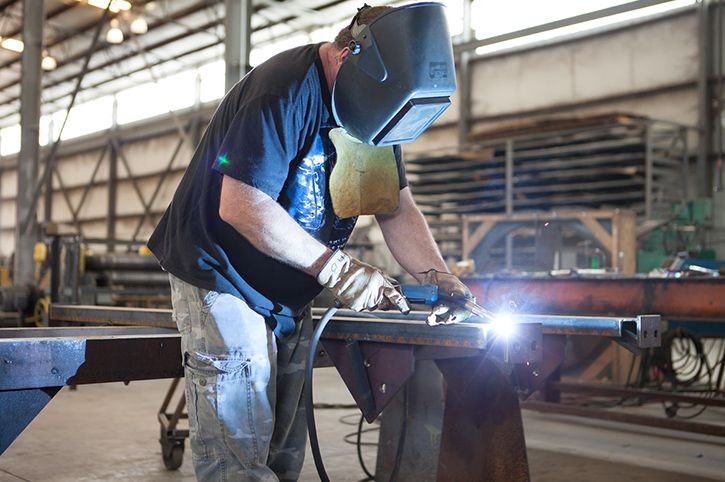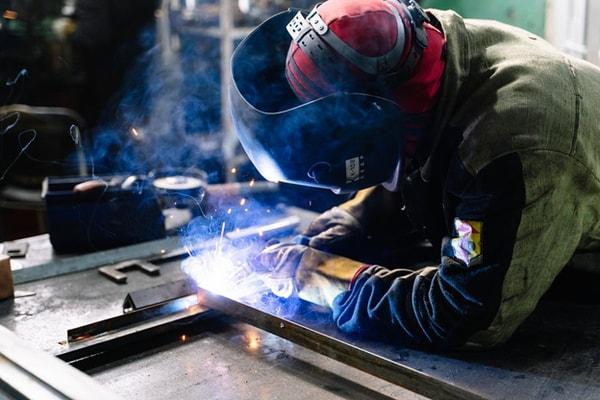Welding WPS: Typical Blunders to Avoid and Exactly How to Correct Them
Welding WPS: Typical Blunders to Avoid and Exactly How to Correct Them
Blog Article
The Ultimate Guide to Welding WPS Procedures: A Comprehensive Summary for Welders
In the complex world of welding, Welding Procedure Requirements (WPS) act as the foundation of making certain quality, uniformity, and safety and security in welding operations. Understanding the subtleties of developing, applying, and keeping track of WPS treatments is important for welders aiming to boost their craft and satisfy sector criteria. As we explore the numerous components of a WPS and discover the complexities of qualification and qualification, we will discover the important function these procedures play in the realm of welding. Allow's start a trip to untangle the complexities and importance of WPS treatments in welding techniques.
Importance of WPS Procedures
Comprehending the significance of Welding Treatment Specs (WPS) procedures is crucial for guaranteeing the high quality and integrity of welded frameworks. WPS treatments function as a roadmap for welders, describing the necessary steps, parameters, and products required to accomplish a sound weld. By adhering to WPS guidelines, welders can make sure consistency in their work, resulting in structurally sound and reputable welds.
Among the primary reasons that WPS treatments are vital is their role in maintaining weld quality and integrity. Following the specified welding parameters and strategies outlined in the WPS assists avoid defects such as porosity, breaking, or insufficient fusion, which can compromise the stamina and resilience of the weld. Furthermore, WPS procedures are essential for ensuring compliance with industry requirements and codes. By complying with well-known WPS standards, welders can show that their job fulfills the essential needs for security and top quality, giving assurance to customers, inspectors, and governing bodies. Fundamentally, the significance of WPS procedures can not be overstated, as they are basic to accomplishing regular, top quality welds that satisfy market standards and specifications.

Parts of a WPS
A Welding Procedure Specification (WPS) typically makes up important parts that information the specific needs for performing a weld, making certain consistency and high quality in the welding procedure. The essential components of a WPS consist of vital variables such as base steels, filler metals, preheat and interpass temperatures, welding procedures, shielding gases, welding placements, and post-weld warmth treatment demands.
Base metals describe the products being joined, while filler steels are utilized to load the void between the base steels during welding. Preheat and interpass temperature levels are critical for controlling the heat input and avoiding issues like breaking or distortion. The welding procedure details the specific technique to be made use of, whether it's gas metal arc welding (GMAW), protected metal arc welding (SMAW), or one more technique. Protecting gases secure the weld swimming pool from climatic contamination. Welding settings define the positionings in which welding can be executed. Post-weld warm treatment may be needed to alleviate tensions and enhance the weld's residential properties. An extensive understanding of these elements is critical for developing a comprehensive and efficient WPS.

Qualification and Accreditation
Having developed the crucial parts of a Welding Procedure Requirements (WPS), the focus now shifts towards the vital facets of credentials and certification in welding techniques.

Qualification, on the various other hand, is the formal recognition of a welder's certifications by a pertinent certification body or organization. Welding certifications are typically based upon the click for more info details welding processes, products, and placements a welder is qualified to deal with. Holding a valid welding certification demonstrates that a welder meets industry standards and is proficient to perform welding tasks to the needed specs.
Producing a WPS
To establish a Welding Procedure Requirements (WPS) that meets market criteria, mindful consideration of welding processes, materials, and operational criteria is important (welding WPS). The initial step in creating a WPS is to determine the welding process to be used, such find this as gas steel arc welding (GMAW) or shielded steel arc welding (SMAW) When the welding procedure is figured out, the next crucial aspect is picking the proper materials, thinking about factors like base metal kind, thickness, and joint design. Functional criteria such as welding current, voltage, traveling rate, and securing gas make-up must also be thoroughly defined in the WPS.

Carrying Out and Checking WPS
Upon settling the extensive Welding Treatment Spec (WPS) that carefully details welding procedures, products, functional criteria, and top quality guarantee steps, the focus moves to efficiently applying and keeping an eye on the well-known procedures. Application entails making sure that all welders entailed in the project are familiar with the WPS and follow it meticulously throughout the welding process. Reliable implementation and monitoring of the WPS are critical for ensuring the integrity, stamina, and safety of the bonded joints, ultimately adding to the overall success of the welding job.
Conclusion
In verdict, understanding and following Welding Procedure Requirements (WPS) is critical for welders to make certain high quality, consistency, and safety and security in their work. By recognizing the elements of a WPS, acquiring proper credentials and qualifications, creating in-depth procedures, and implementing and checking them effectively, welders can improve their abilities and effectiveness in welding techniques. Sticking to WPS treatments is necessary for creating high-grade welds and conference market criteria.
In the detailed globe of welding, Welding Procedure Specs (WPS) serve as the foundation of making sure high quality, uniformity, and safety in welding procedures. The welding process lays out the particular method to be made use of, whether it's gas steel arc welding (GMAW), protected steel arc welding (SMAW), or another technique.To create a Welding Treatment Specification (WPS) that satisfies market requirements, mindful factor to consider of welding procedures, materials, and operational criteria is important. The initial action in producing a WPS is to identify the welding procedure to be used, such as gas metal arc welding (GMAW) or secured metal arc welding (SMAW)Upon completing the extensive Welding Treatment Specification (WPS) that diligently details welding processes, products, operational specifications, and quality guarantee measures, the focus changes to effectively applying and keeping track of the established procedures.
Report this page